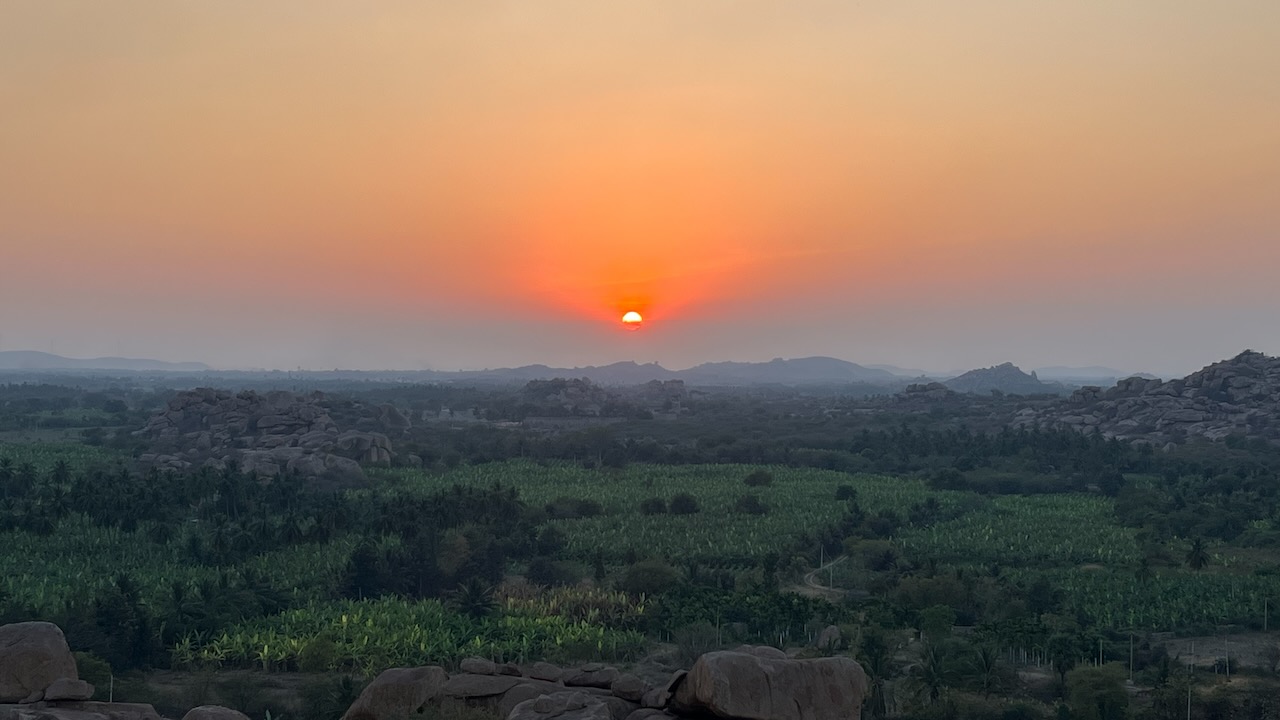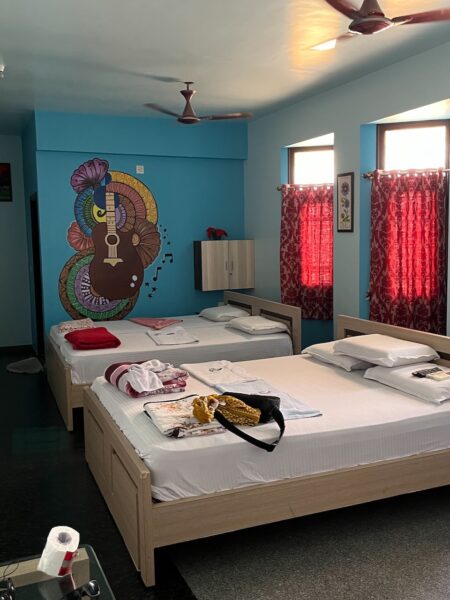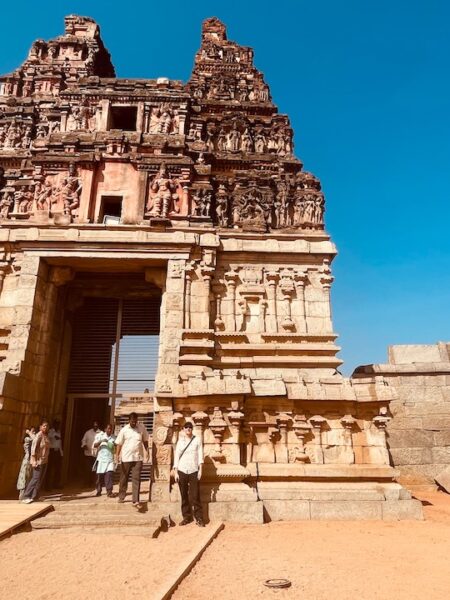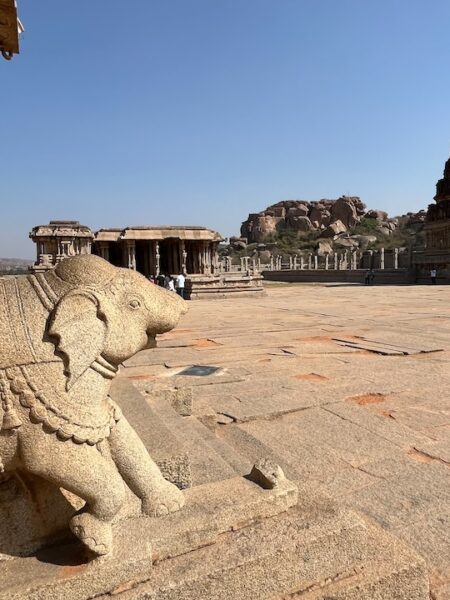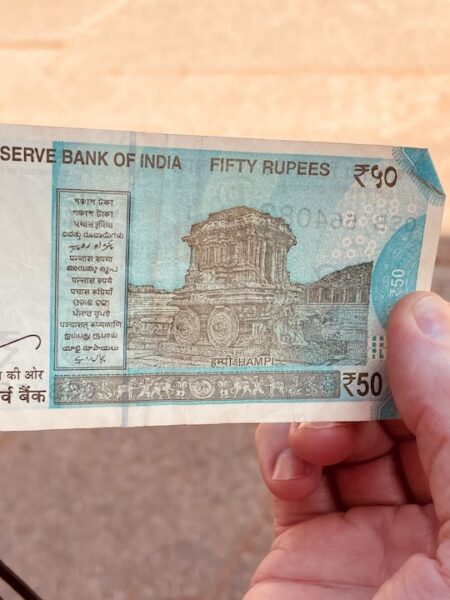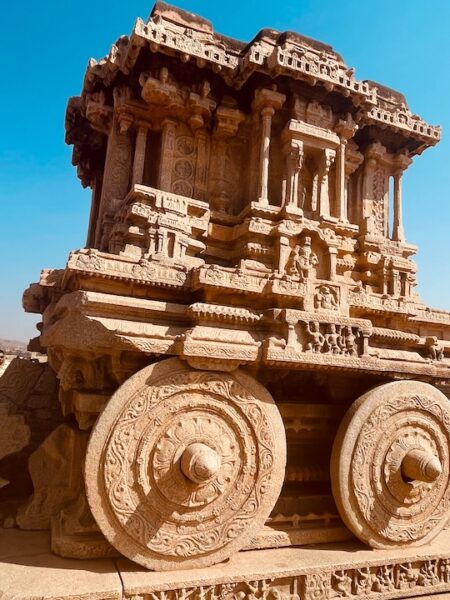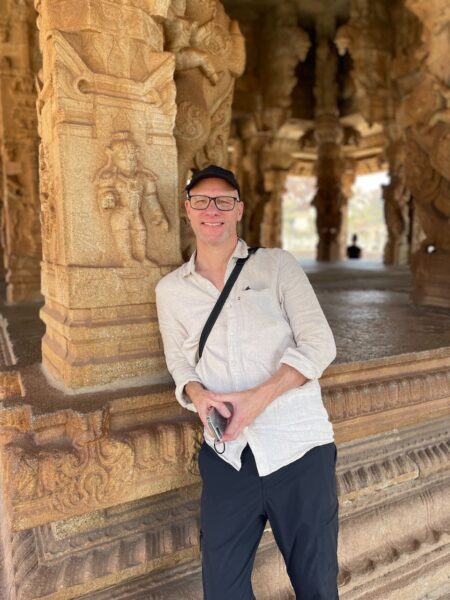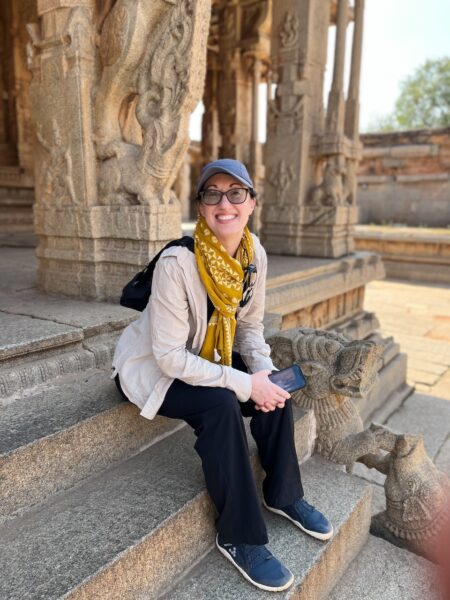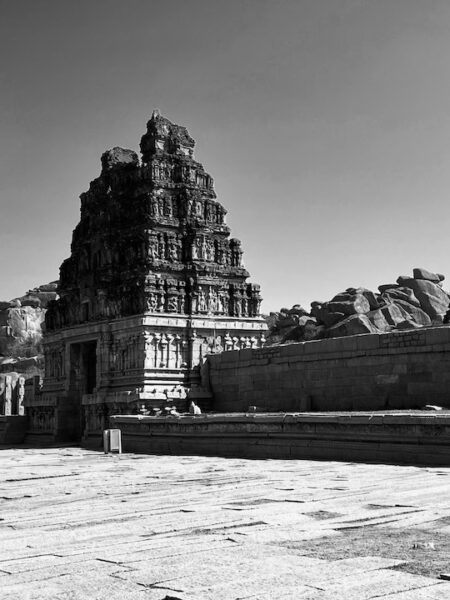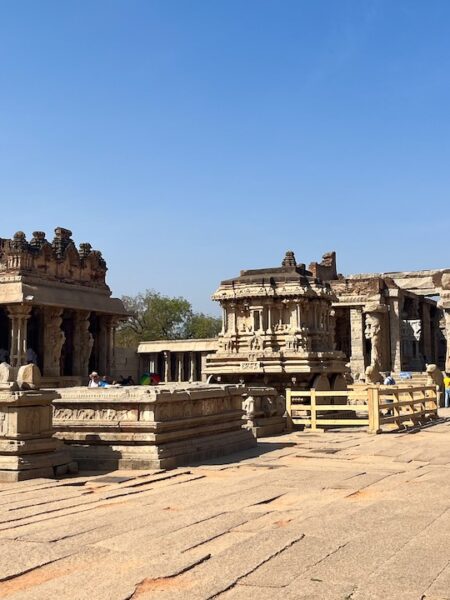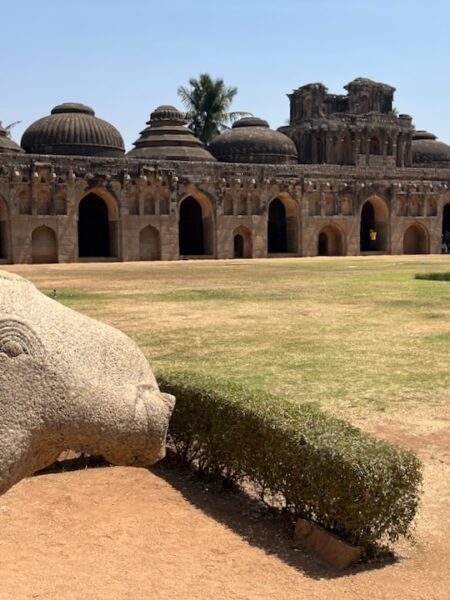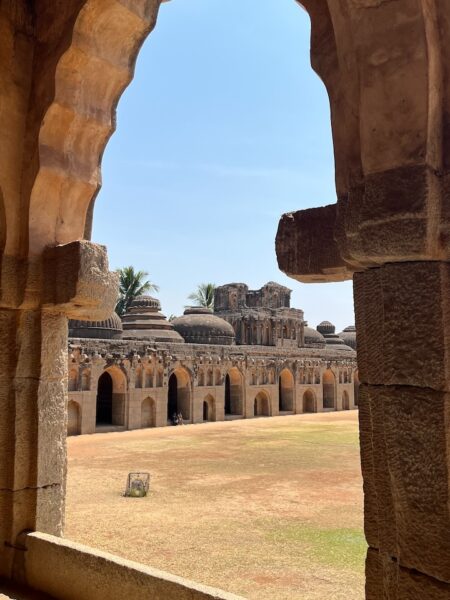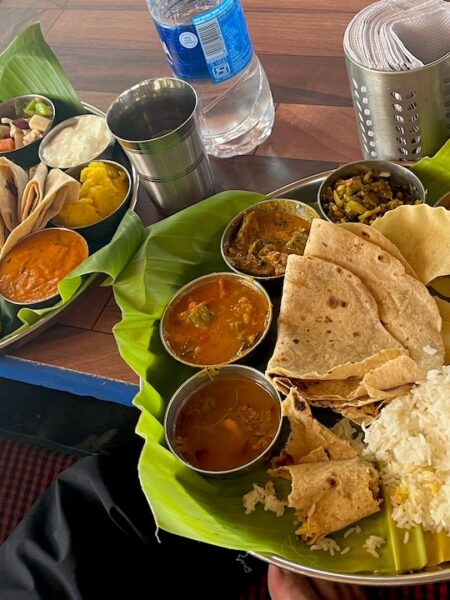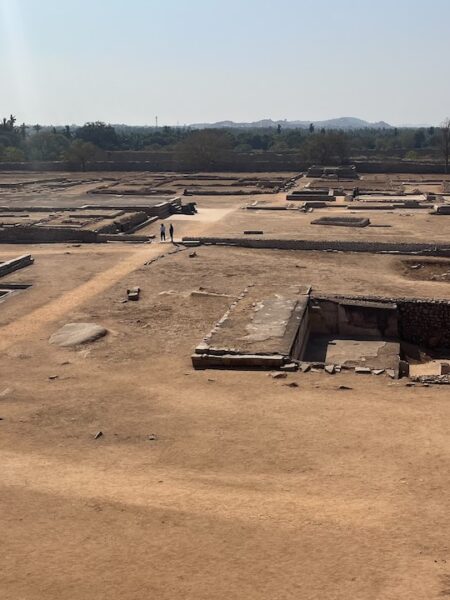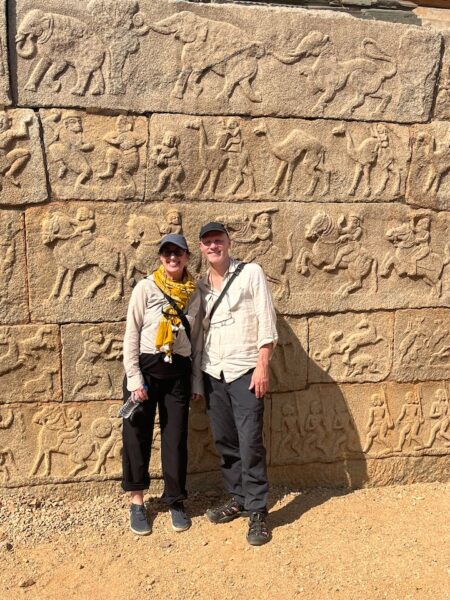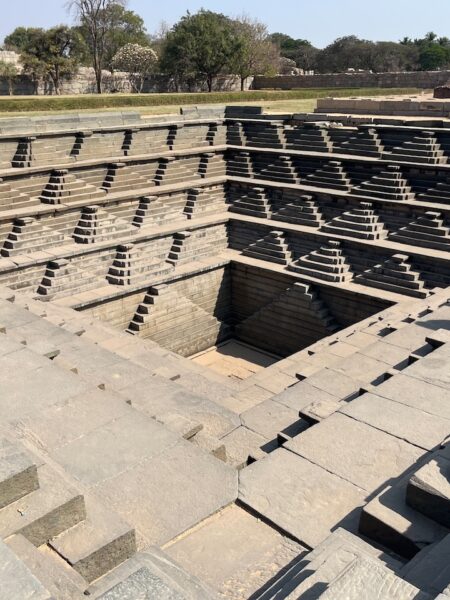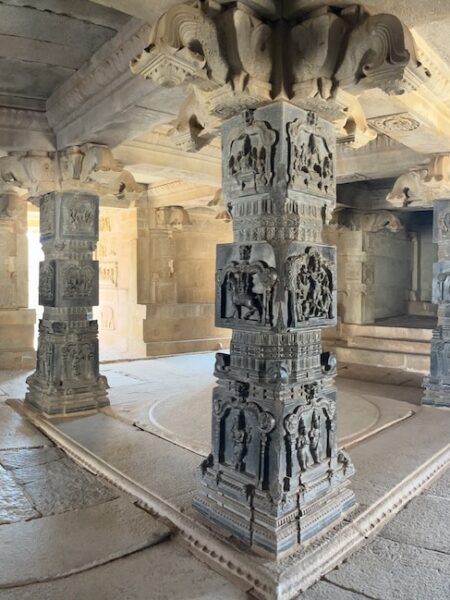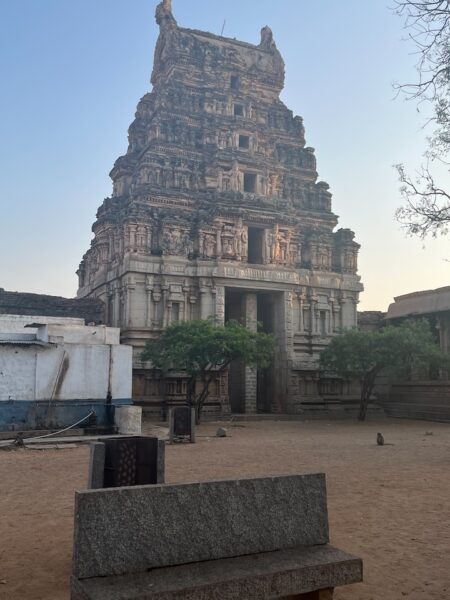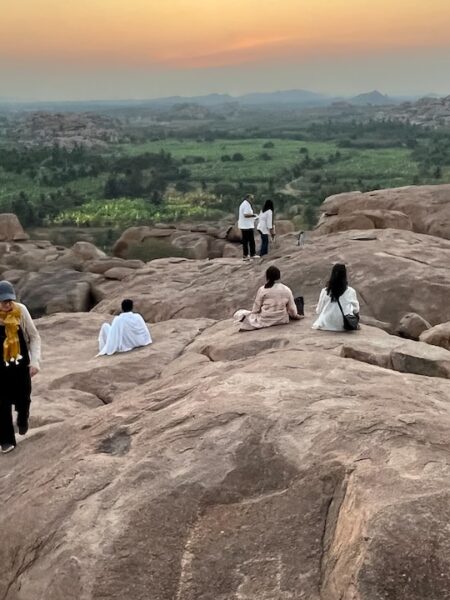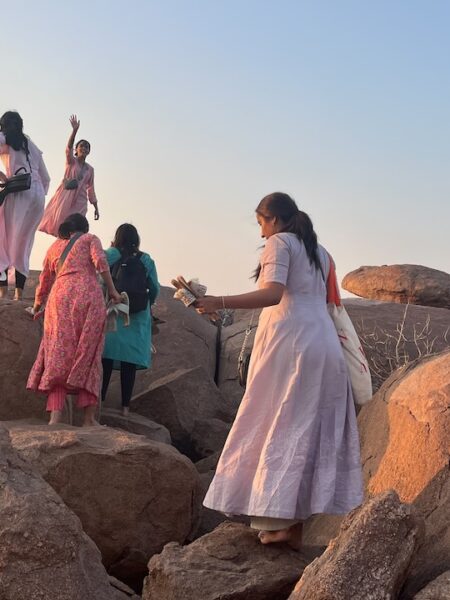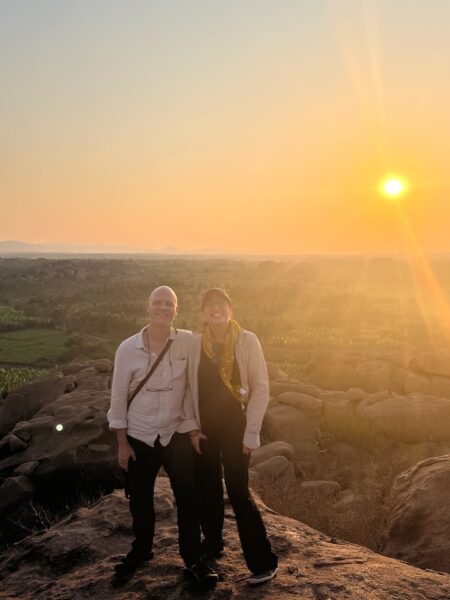Today was one of those rare packed-full-of-amazing-things days you only get while travelling. We had a breakfast of omelette and coffee on the covered rooftop terrace at 8.30am, then met our tuk-tuk driver for the day, a man about my age with very little English but very friendly and helpful, who took us to the Vitthala temple to begin our day. I had a vague itinerary in mind after reading up on the area, but I quickly learned to give up and go with the flow, as the sights are scattered over a large area and it’s hard to get a sense of what is where.
We bought a 600 R ticket each (which covered everything today), then ignored the tourist shuttle mini-buses and started walking the road towards the temple complex, getting a feel for the barren, rocky landscape dotted with ruins. The area feels a bit like the Australian outback, with a dry heat and chunks of granite like huge shattered marbles thrown over the landscape.
First we explored a small mandapa (columned hall) sitting alone in a field, then turned a corner to see a vast dirt street lined on each side with crumbling colonnades, a small temple, and a large (dry) tank with a pavilion in its centre (we explored this later, on the way back). This street led up to the main gopura (entrance tower/gateway) of the temple complex. Beyond was a huge and impressive walled courtyard, gopuras on three sides, enclosing columned halls and sanctuaries, and a massive sculpted chariot (featured on the 50 R note) – all roughly 15th-early 16th centuries. It’s strange how little is known about many of the structures of Vijayanagara, and how ruined everything is, despite the fact the city flourished only 400 years ago, when it was the largest city in the world after Peking! It was destroyed by an alliance of southern sultans in 1565, and so little is left of what must have been a vast, beautiful, bustling city.
I was in my element, and both of us had a wonderful time exploring, experimenting with photographs, and soaking up the atmosphere.
After a good while we walked back to the ticket gate and met our faithful driver, who took us to the Royal Centre area to the south. Incredible ruins stretched out everywhere, but we started at the Zenana Enclosure (which means women’s quarter, though in fact no one knows what most of the buildings here were for). Inside the 200 square metre walled compound were various structures, including a few very atmospheric watchtowers built into the walls, and the Lotus Mahal, a beautiful little building on a plinth, probably a council chamber.
Walking through a small doorway in one of the enclosure walls, we were confronted with the breathtaking sight of the elephant stables along the far side of a grassed plaza, with a gallery building along the north side. Eleven chambers in a row to house elephants (one, perhaps two in each), capped with ornate domes. Another of those moments where I felt I was ‘in the picture’ of something I’d been looking forward to seeing during our trip research.
After checking out some other ruined temples beyond this place in an increasingly desolate area of scrubby desert, we returned to our driver, stopping to explore another temple with a 3m tall statue of Hanuman the monkey god in it.
It was way past time for lunch so we headed back to the Mango Tree Restaurant and had a South Indian and North Indian thali feast with ginger and lemon drinks, sitting in the comfy floor-level seats (shoes off) with other patrons next to and opposite us – the place was packed. At this point I really started feeling like a proper traveller again.
Back to the ruins! By now it was getting very hot indeed, but we explored the Queen’s Bath building, then nearby, a huge enclosure dominated by a stepped platform that brought to mind my visit to Chichen Itza and had an amazing view over fields of ruined building foundations. A friendly older man took our photo against the platform’s bas-reliefs. Past this was an incredible square stepped tank made of grey-green schist, that made sharp geometric patterns in the harsh sunlight.
The sun was beating down hard now, so we fitted in one last incredible temple, the Hazara Rama, a private chapel for the Vijayanagara emperors. This was in better condition than anything we’d yet seen and featured four polished black beautifully carved dolomite columns in the sanctuary.
Pretty exhausted, we went back to our room and played a few games of Archaeology (Carol seems to be winning every time!). About 6pm our excellent host suggested we head to a nearby temple for to see the sunset. Malyaranta Hill has an atmospheric temple compound at the top with musicians playing inside (apparently they play non-stop 24/7), and beyond a doorway in the back wall, an incredible hilltop of huge boulders with a spectacular view over the banana-tree filled valley framed by granite hills. The perfect place to watch the sun go down. There were many other people there with the same idea, most of them Indians; we laughed with a Mumbai family as they struggled over the boulders to get to a better vantage point; their group were mostly young women and it looked like the last scene of Picnic at Hanging Rock, only with more laughing. One older man commented on how nimble I was walking over the rocks and I told him I used to be a climber.
One more trip back to the restaurant, though we weren’t too hungry yet so lingered over our drinks (and later I couldn’t even consider another slice of banoffee pie); and finally back to our room sometime past 8pm. What an amazing day! Nothing, but nothing, beats spending a whole day exploring ancient ruins and temples.

